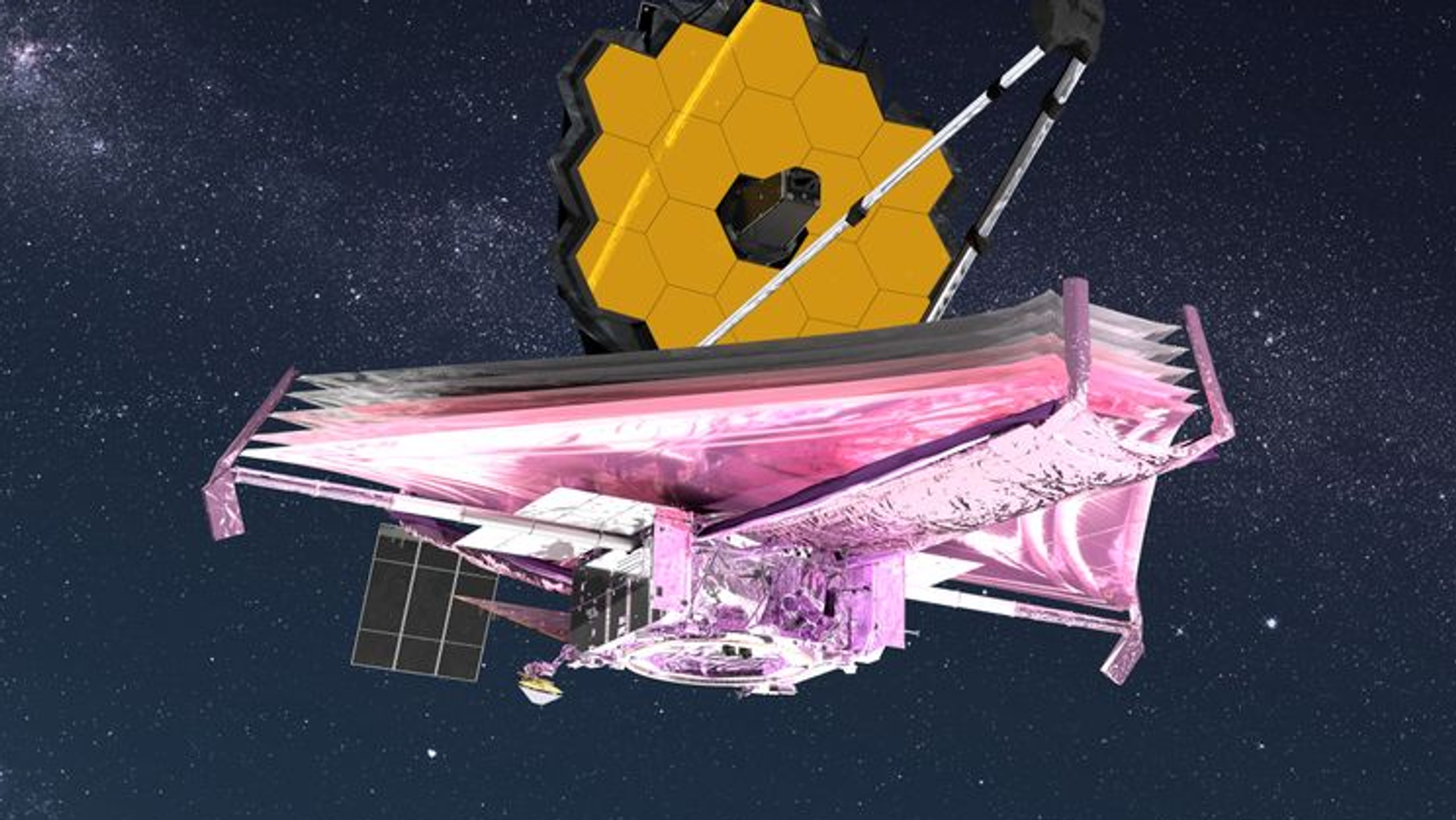https://sputnikglobe.com/20220125/james-webb-telescope-reaches-final-stable-position-1-million-miles-from-earth---nasa-1092494231.html
James Webb Telescope Reaches Final Stable Position 1 Million Miles From Earth - NASA
James Webb Telescope Reaches Final Stable Position 1 Million Miles From Earth - NASA
Sputnik International
WASHINGTON (Sputnik) - The James Webb Space Telescope (JWST) successfully fired a planned rocket on-course correction to maneuver itself into a permanent... 25.01.2022, Sputnik International
2022-01-25T00:00+0000
2022-01-25T00:00+0000
2022-01-25T00:00+0000
nasa
james webb space telescope (jwst)
https://cdn1.img.sputnikglobe.com/img/07e6/01/04/1092025504_0:91:744:510_1920x0_80_0_0_dab27cd7b746f1d40475c2dc24d4b99d.png
"Today, at 2:00 p.m. EST, Webb fired its onboard thrusters for nearly five minutes (297 seconds) to complete the final post-launch course correction to Webb’s trajectory," NASA said in a blog report.The final mid-course burn added only about 3.6 miles per hour (1.6 meters per second) to Webb’s speed, which was all that was needed to send it to its preferred “halo” orbit around the L2 point, NASA said.Lagrange points are positions in space where objects sent there tend to stay put. At such points, the gravitational pull of two large masses precisely equals the centripetal force required for a small object to move with them. These points in space can be used by spacecraft to reduce fuel consumption needed to remain in position, according to NASA.
Sputnik International
feedback@sputniknews.com
+74956456601
MIA „Rossiya Segodnya“
2022
Sputnik International
feedback@sputniknews.com
+74956456601
MIA „Rossiya Segodnya“
News
en_EN
Sputnik International
feedback@sputniknews.com
+74956456601
MIA „Rossiya Segodnya“
Sputnik International
feedback@sputniknews.com
+74956456601
MIA „Rossiya Segodnya“
nasa, james webb space telescope (jwst)
nasa, james webb space telescope (jwst)
James Webb Telescope Reaches Final Stable Position 1 Million Miles From Earth - NASA
WASHINGTON (Sputnik) - The James Webb Space Telescope (JWST) successfully fired a planned rocket on-course correction to maneuver itself into a permanent stable position at a Lagrange point between the Earth and the Sun, almost one million miles from its home planet, NASA announced on Monday.
"Today, at 2:00 p.m. EST, Webb fired its onboard thrusters for nearly five minutes (297 seconds) to complete the final post-launch course correction to Webb’s trajectory," NASA said in a blog report.
"This mid-course correction burn inserted Webb toward its final orbit around the second Sun-Earth Lagrange point, or L2, nearly 1 million miles away from the Earth."
The final mid-course burn added only about 3.6 miles per hour (1.6 meters per second) to Webb’s speed, which was all that was needed to send it to its preferred “halo” orbit around the L2 point, NASA said.
"Webb has used as little propellant as possible for course corrections while it travels out to the realm of L2, to leave as much remaining propellant as possible for Webb’s ordinary operations over its lifetime: station-keeping (small adjustments to keep Webb in its desired orbit) and momentum unloading (to counteract the effects of solar radiation pressure on the sunshield)," NASA added.
Lagrange points are positions in space where objects sent there tend to stay put. At such points, the gravitational pull of two large masses precisely equals the centripetal force required for a small object to move with them. These points in space can be used by spacecraft to reduce fuel consumption needed to remain in position, according to NASA.

